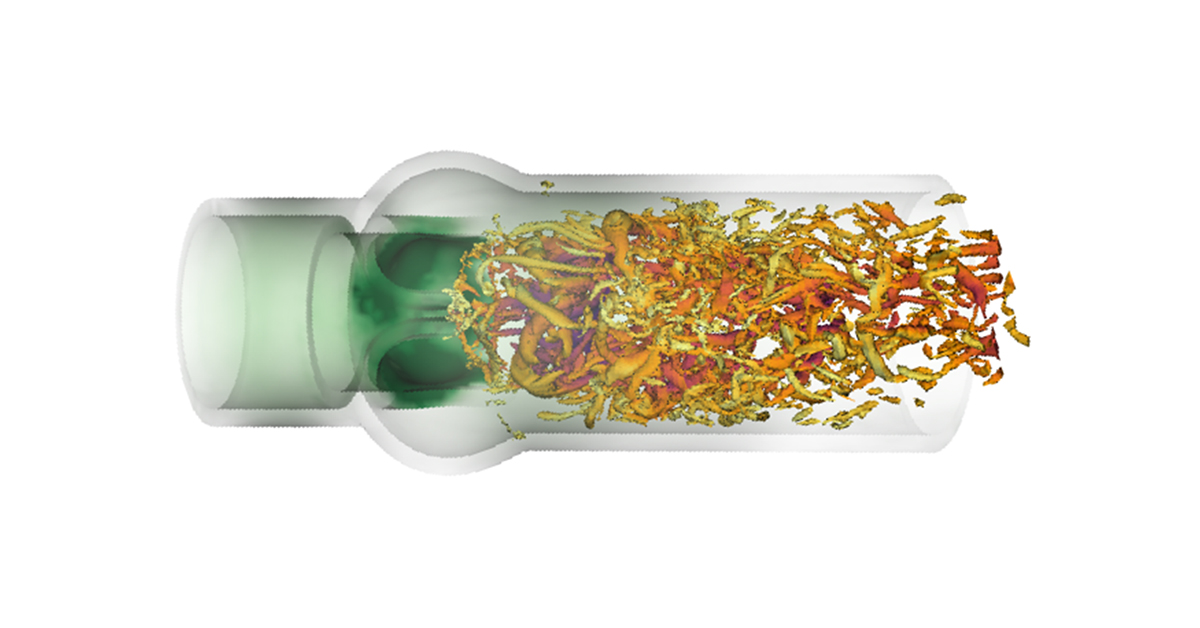2020/09/30 | Research | Biomechanics
Effects of bioprosthetic heart valves
Prosthetic heart valves are known to lead to turbulent blood flow. Just how this turbulence comes to form was now investigated for the first time by researchers from the ARTORG Cardiovascular Engineering Lab. They performed a detailed characterization of the turbulent flow downstream of a bioprosthetic aortic valve using computational simulations validated against experimental measurements of the turbulent flow field with tomographic particle image velocimetry.
 Turbulent blood flow downstream of a bioprosthetic aortic valve
(ARTORG Center, Cardiovascular Engineering)
Turbulent blood flow downstream of a bioprosthetic aortic valve
(ARTORG Center, Cardiovascular Engineering)
A turbulent flow field may have adverse effects on blood itself, on the aortic wall and on the performance of a prosthetic heart valve. To better understand the effect of turbulence on shear-induced thrombocyte activation, unphysiological wall shear stresses and hemodynamic valve performance, this study analyzed the blood flow for disturbance amplitudes, dissipation rates and shear stress distributions. It was found that approximately 26% of the hydrodynamic resistance of the valve was due to turbulent dissipation mainly about one valve diameter downstream of the valve opening. Viscous shear stresses reached the critical level for blood platelet activationand subsequent thrombosis, and vortex rings feeding the turbulent flow downstream were connected to leaflet fluttering.
Link to the study
Cardiovascular Engineering